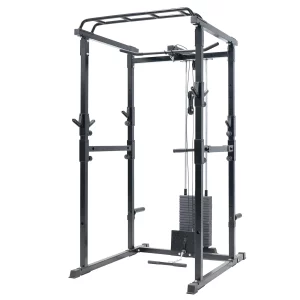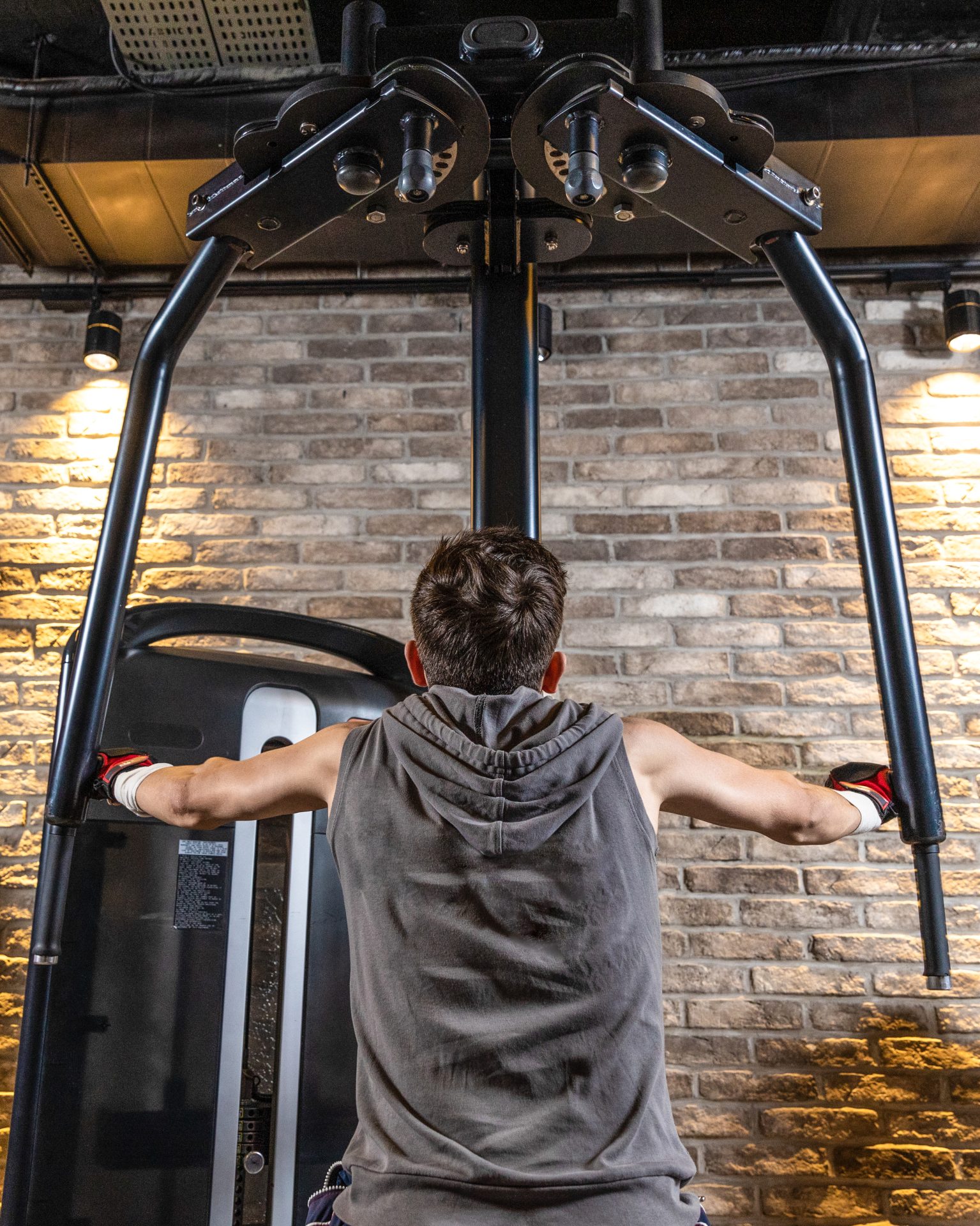A great chest isolation exercise is the pec deck. However, if you exercise at home, you most likely lack access to one. If you do it too often, it will also lose its effectiveness. The best alternatives to the pec deck for an awesome chest will help you avoid both of these issues.The pec deck exercise is very well-liked. That is why it is effective. There aren’t many exercises that isolate your pecs as well. A great way to train your chest to failure with the pec deck is as well. After all, all you have to do to stop a rep is open your arms and lower the weights again.
Contents
Pec Deck Structure
Leg extensions are an inferior pec deck substitute, though they are still available.
There are no large bars to become trapped beneath. To completely exhaust your chest muscles, use the pec deck at the beginning of a pre-exhaust superset or near the end of your workout. It actually fits in well with almost any aspect of your chest workout because it is a flexible exercise.
However, despite how effective the pec deck is, it restricts your range of motion and forces you to move in a very specific way.
Your body will quickly adjust because every rep is the same. You’ve probably noticed that using the pec deck no longer makes your chest hurt. Your workouts will start to become less effective if you perform pec deck sets after sets. If you stick with your program too long, your progress will eventually plateau.
The exercise in question must target the same important muscles, even if it uses a different movement or training tool, in order to be a legitimate substitute.
The following muscles play a major role in the pec deck:
Your main chest muscle is called your pectoralis major, or pecs for short. The pecs, which are situated on the front of your upper torso, control the medial and horizontal rotation of your shoulders.
When using a pec deck, the pecs are the agonist, which means they are the primary mover and the reason why most people perform this exercise.
Pectoralis minor, also known as the “pec minor,” is a small, flat muscle located below the pec major.
As you perform the pec deck, it supports your pec major and keeps your shoulders from lifting.The front of your shoulders contain the anterior deltoids, which cooperate with your pecs to flex your shoulder joint.
Serratus anterior: Located along the sides of your chest, above your first eight ribs, is the serratus anterior.
It’s main job is to keep your shoulder blades flat against your torso, or the scapula.
This muscle gets its name because, when fully developed, and if you are lean enough to see it, it resembles the edge of a serrated knife.
Pec Deck Alternatives
Crossover Cable
Like a pec deck, cable crossovers isolate your chest.
Depending on the angle of your arms, you can use a cable crossover machine to target your upper, middle, or lower pecs.
You won’t be able to lift as much weight with cable crossovers as you can with pec decks because you’ll need to use your core to keep your spine stable.
By moving slowly and fluidly and squeezing your pecs hard at the halfway point of each rep, you can overcome this disadvantage.
Exercise Guidelines
- At armpit or shoulder height, fasten a single grip handle to each side of the machine.
- Stand between the pulleys while holding both handles.
- Put your leading foot in front for balance and advance a few steps.
- Bring both hands together, elbows slightly bent, chest contracted, arms moving in a semicircular motion.
- pause for two seconds.
- When you notice a slight stretch in your chest, reverse the motion and bring your arms back.
- As many times as you’d like to, repeat this movement.
Supine Cable Fly
This exercise is a good choice if you prefer to exercise your pecs while lying on a bench. Using cables puts your pecs almost constantly under tension, which should result in a fantastic pump.
Even though it can be a little awkward to set up this exercise, your efforts will be rewarded.
How to execute:
- A bench in the center of a cable crossover device, please. Lay on the bench while holding a handle in each hand. Your elbows should be slightly bent but rigid as you extend your arms until they are vertical.
- Don’t overextend your shoulders as you open your arms and lower the handles toward the ground.
- In order to bring the handles together over your chest, you must squeeze your arms back up.
- One rep completed; keep going!
- Use an incline bench for this exercise to vary it.
YTWs
Because YTWs are a bodyweight activity, they are the perfect reverse pec deck substitute for at-home workouts or for anyone without access to any equipment.
Because it’s three positions (the y, the t, and the w) will target the same muscle and because the “T” is the same movement pattern as the reverse pec deck, it is a potential substitute for the reverse pec deck.
The YTW exercise is a great choice since it not only strengthens the rear deltoids but also teaches us to engage the lower traps rather than the upper traps, which improves posture and protects the health of our shoulders.
Bench Press with a Wide Grip
However, the wide-grip variation of the bench press is one of the best for highlighting your pecs. All bench press variations work your chest.
However, wide grip bench presses can be tough on your joints, so don’t lift too much weight.
Wide grip bench presses increase the range of motion at your shoulder, producing a more noticeable pec stretch at the bottom of each rep.
Find the best grip width through experimentation so that you can work your pecs without causing any discomfort to your shoulders.
How to execute:
- Start by lying on your back on the bench. Reach up and take the bar with a “regular” grip. Now move your hands outward, 3 to 5 inches, toward the weight discs. Find the position where holding the weight without having your arms fully extended outward feels most natural to you. With the wide grip, your elbows should be bent at an 80-degree angle.
- Lift the weight off the rack and place it directly over your chest in the “ready” position. Aim for the center of your chest, which is a half-inch above your nipples. To avoid wrist fatigue and to keep the exercise focused on your chest rather than your forearms, keep your wrists straight.
- As you lower the weight to just above your chest in Step 3, inhale. Be sure to stop before the barbell touches your chest.
- As you lift the weight back up, forcefully exhale. Avoid letting your elbows fully extend or the joint will lock.
- Inhale and lower your body again after holding for a half-second at the top of the movement.
- Continue as necessary.
Fly Machine
Machine flyes resemble the pec deck in many ways. With this exercise, you don’t press your arms against pads; instead, you hold handles in your hands.
You can adjust the difficulty of this exercise to suit the length of your limbs because the handles are hinged. Because of this, some lifters prefer machine flyes to the pec deck machine.
Exercise Guidelines
- Set the fly machine’s range of motion to what you prefer.
- Then, place your feet on the floor and lean back against the machine’s pads.
- Now extend your arms and bend your elbows slightly to grasp the handles.
- When your hands are almost touching one another, pull the levers together while tensing your chest muscles.
- Hold the position for a few seconds.
- Once your chest starts to feel a little tight, let the levers spread apart.
- Repeat as many times as necessary.
Fly TRX
The versatility of TRXs and other suspension trainers is unmatched.
They make most bodyweight exercises more difficult by introducing a sense of instability and by enabling you to move through a wider range of motion.
Additionally, this training tool has a number of unique exercises for the suspension trainer. TRX flyes will strengthen your pecs.
How to execute:
- Holding the handles of your suspension trainer, take a staggered stance and stand with your back to the anchor point. Extend your arms out in a T-shape. In order to tense your pecs, lean forward. Get your abs ready.
- Pushing your body backwards requires squeezing your arms together. Throughout, keep your arms rigid but slightly bent.
- Repeat from your starting position.
- Your arms will be carrying more weight as you lean forward and move your feet further back, making this exercise more difficult. To choose the desired level of resistance, move your feet.
Pushups with a medicine ball
Push-ups are a powerful, if occasionally underappreciated, pec exercise.
A good substitute for the pec deck is to place your hands on a medicine ball, which increases pec activation and emphasizes the inner part of your chest.
How to execute:
- Set your medicine ball down on the ground. Aim to position your hands on either side of the ball’s apex. Close your hands together. Brace your abs as you step your feet back and forth into the push-up position.
- Arms bent, bring your chest to the ball. Continue pulling your hands in.
- Repeat by spreading your arms out.
- By resting on your knees, you can make this exercise easier. To make it harder, elevate your feet.
Although the pec deck is a well-liked exercise, it is not necessary for developing a strong chest.
In actuality, there are a variety of exercises you can incorporate into your workouts. The peck deck is an exercise, and if you use it too frequently, your body will adapt and you won’t get the same results.
Use the pec deck, but don’t abuse it. Maintain workout effectiveness by periodically changing the pec deck with any of the options in this article.
Each one is equally effective while being sufficiently different to guarantee that your pecs continue to get stronger and more muscular.




